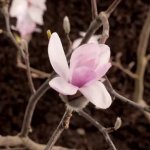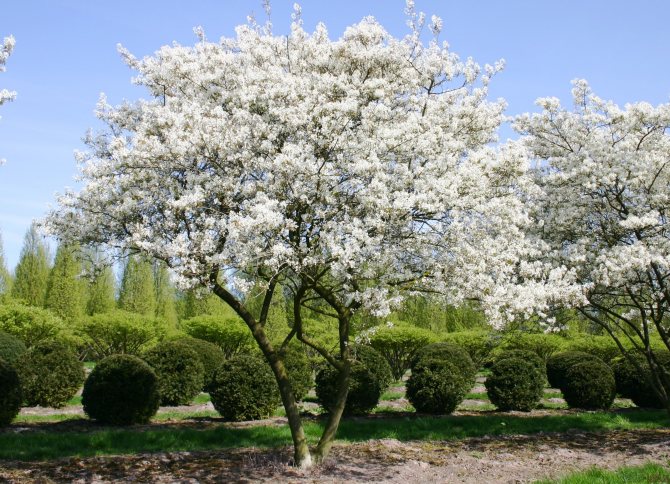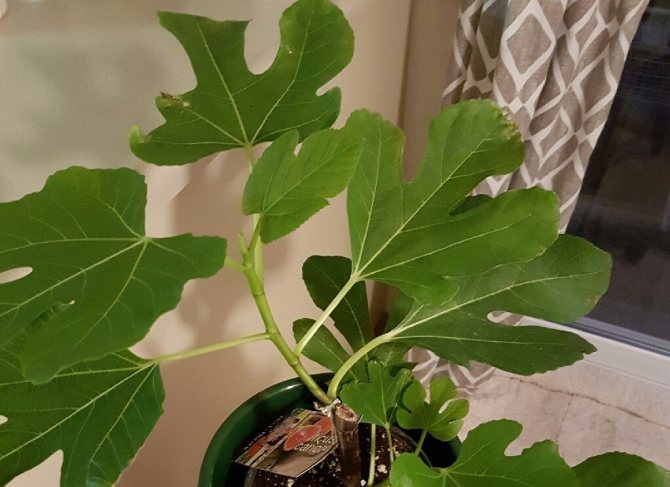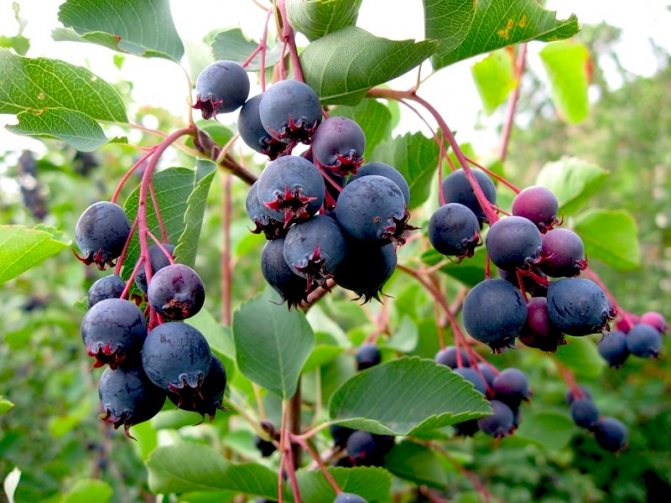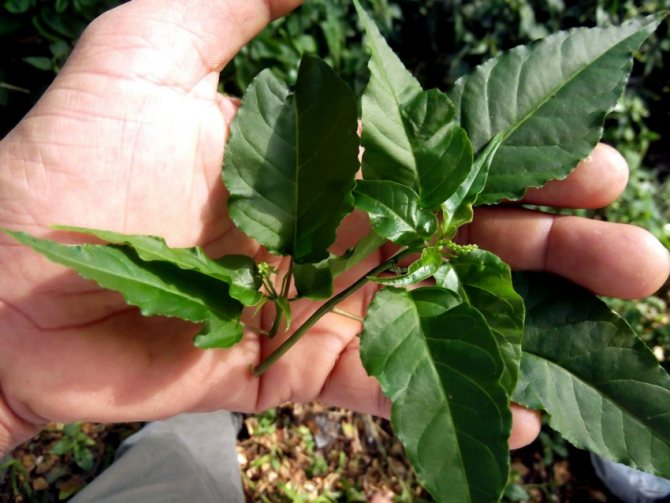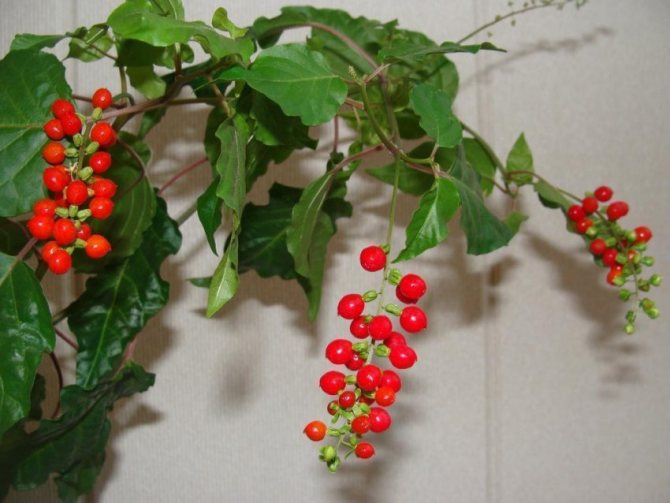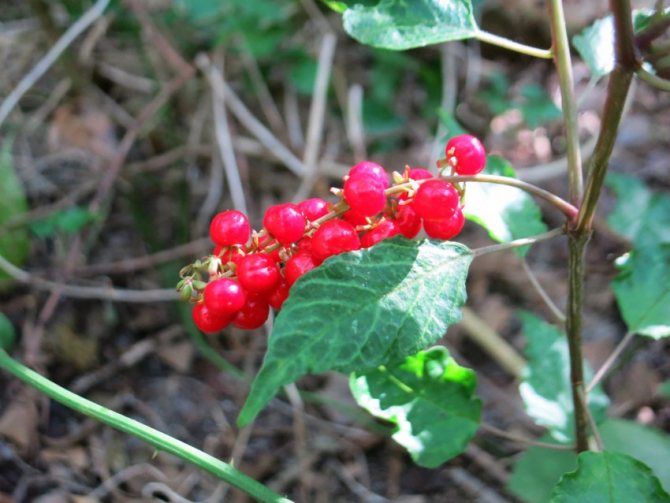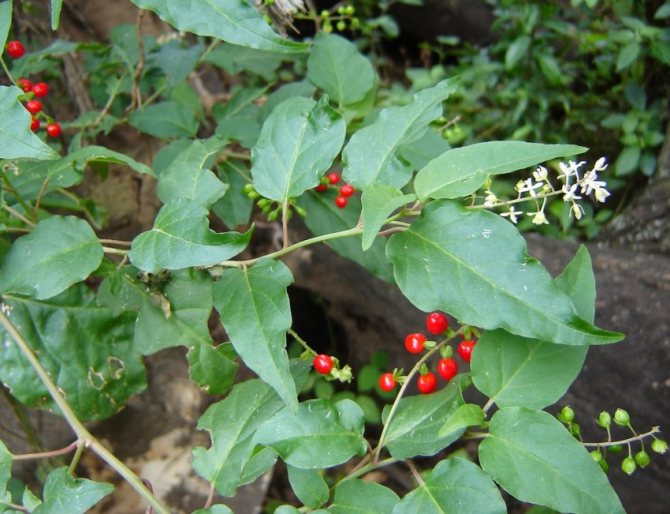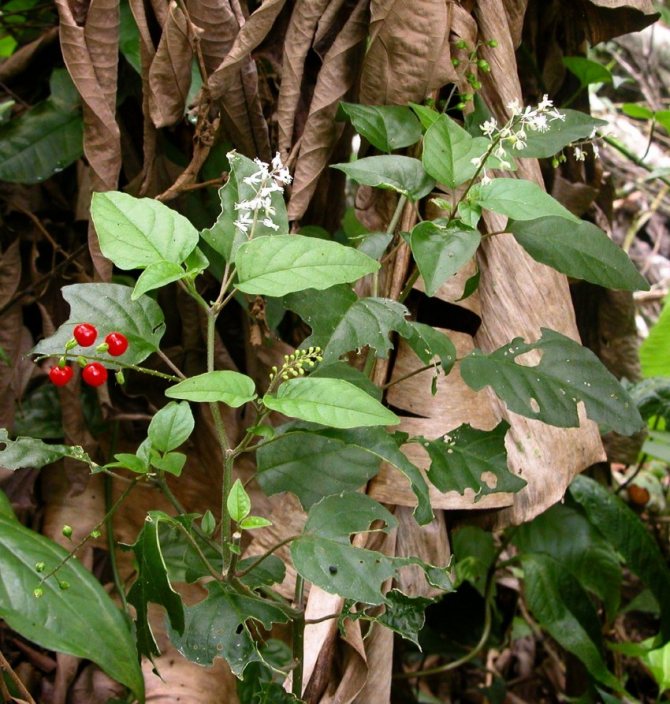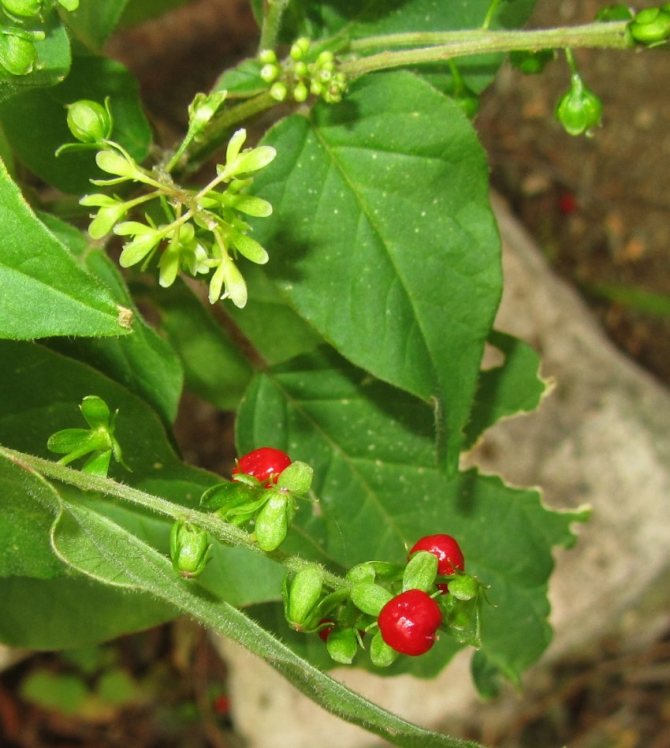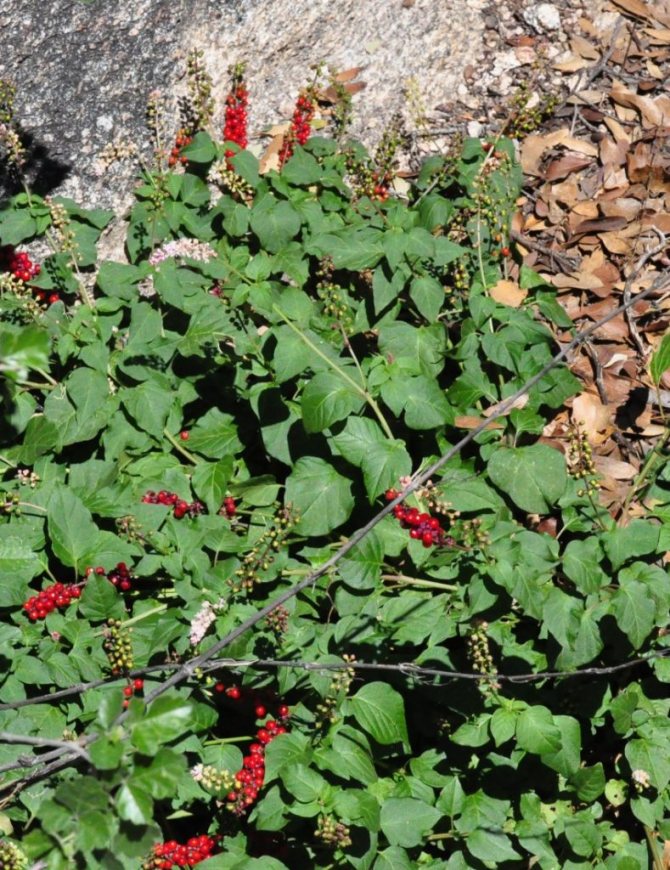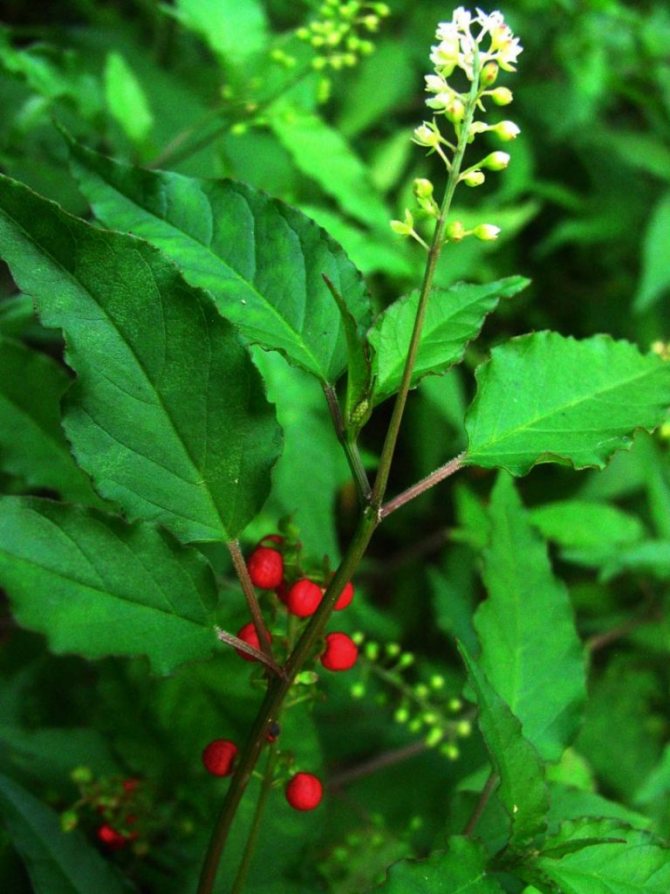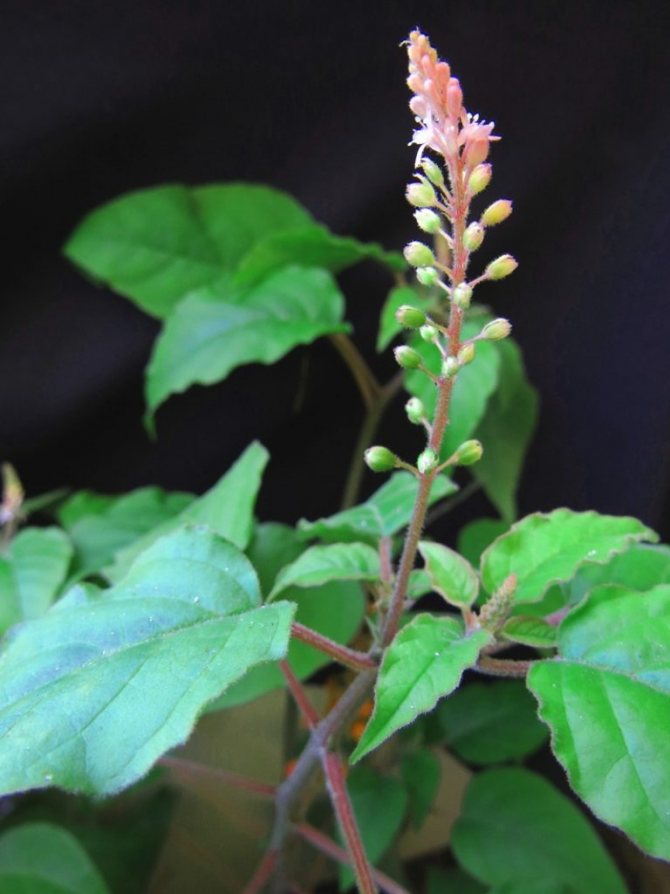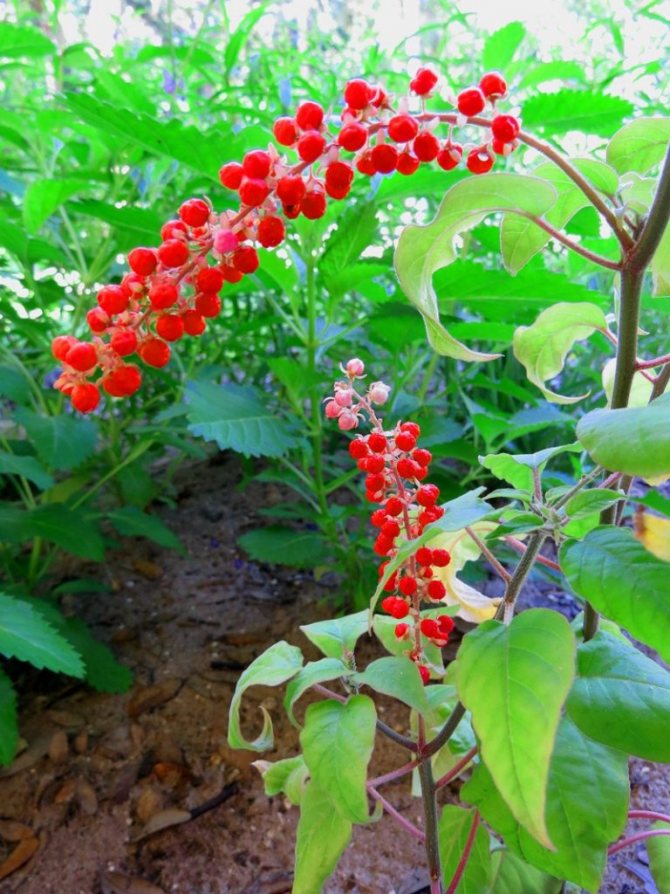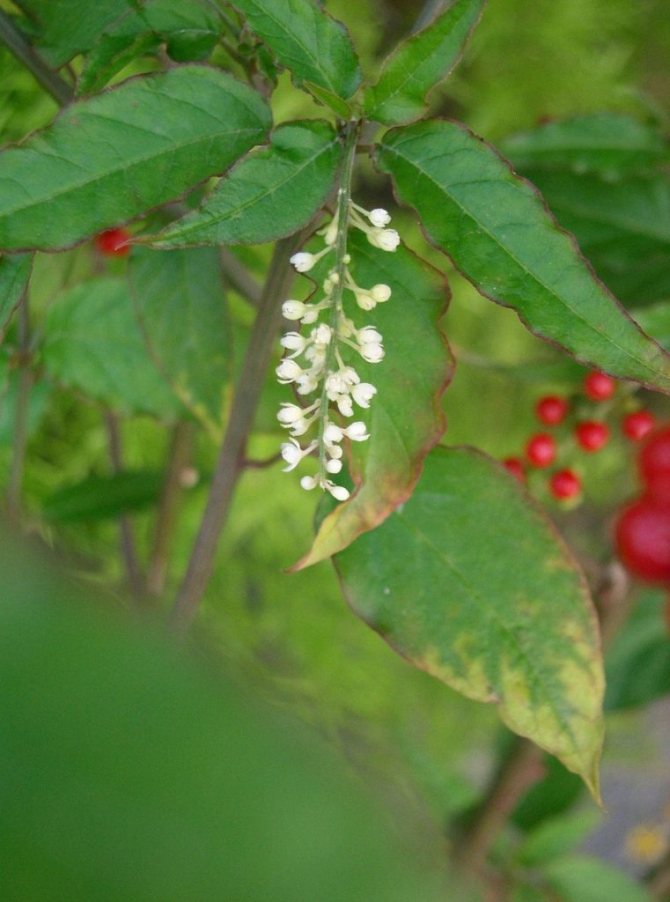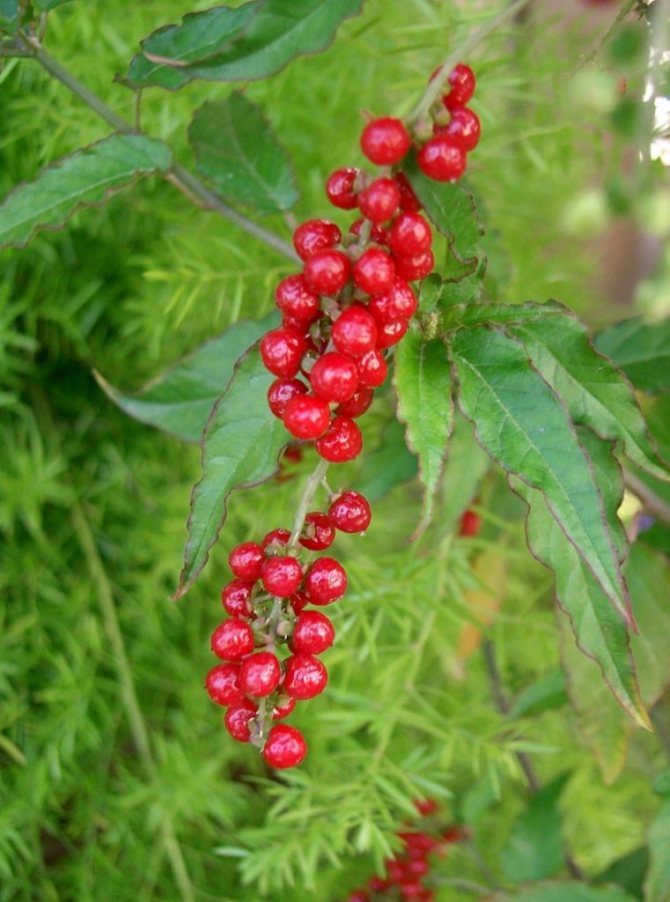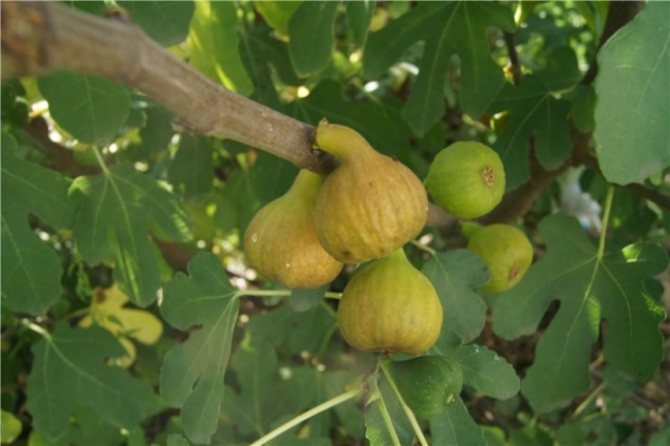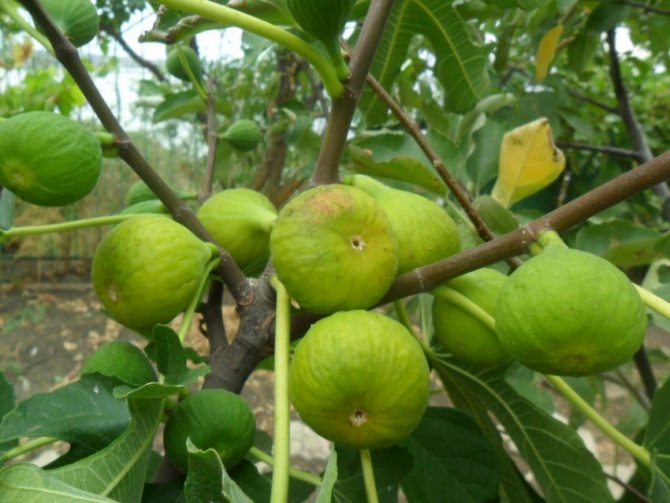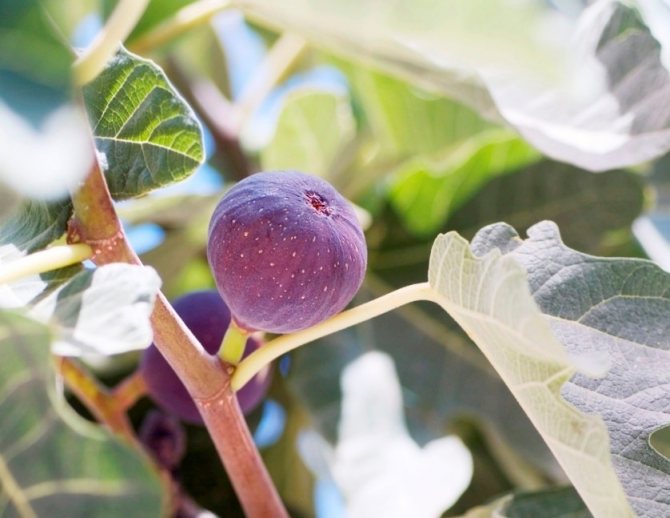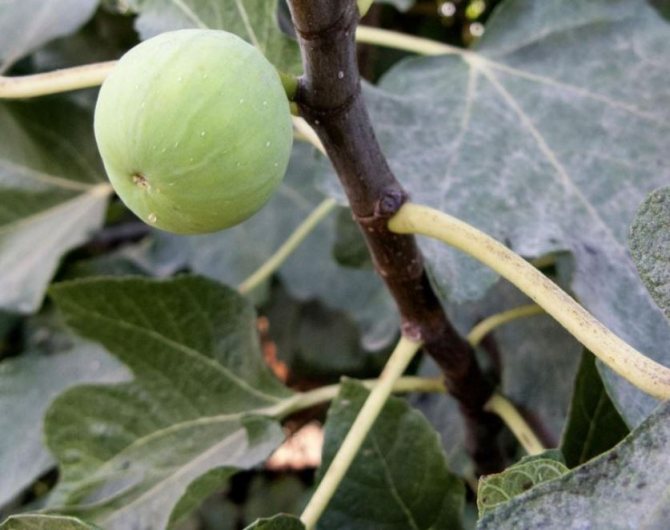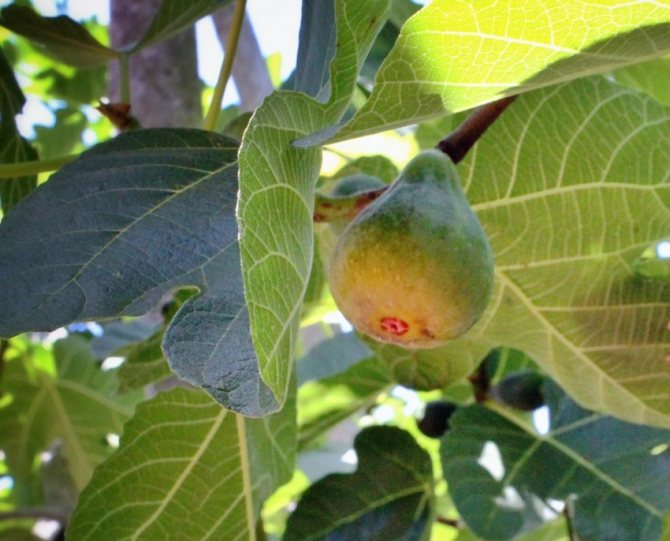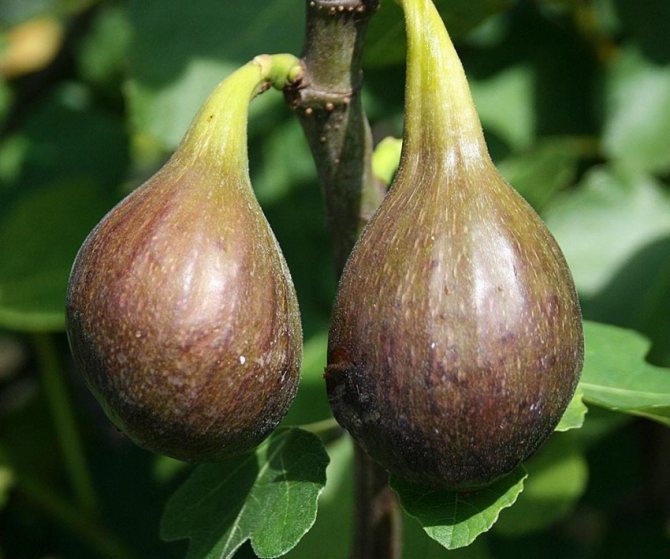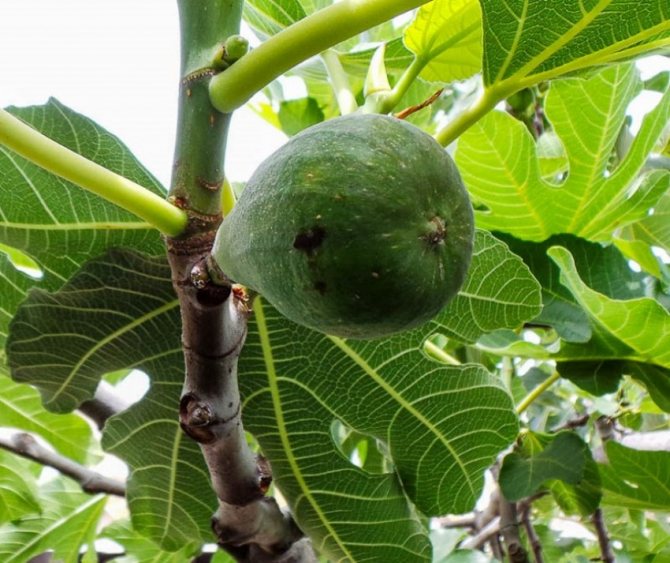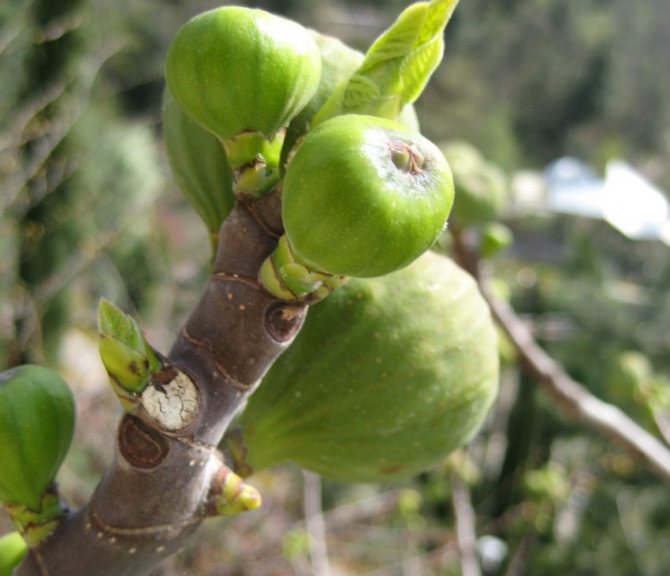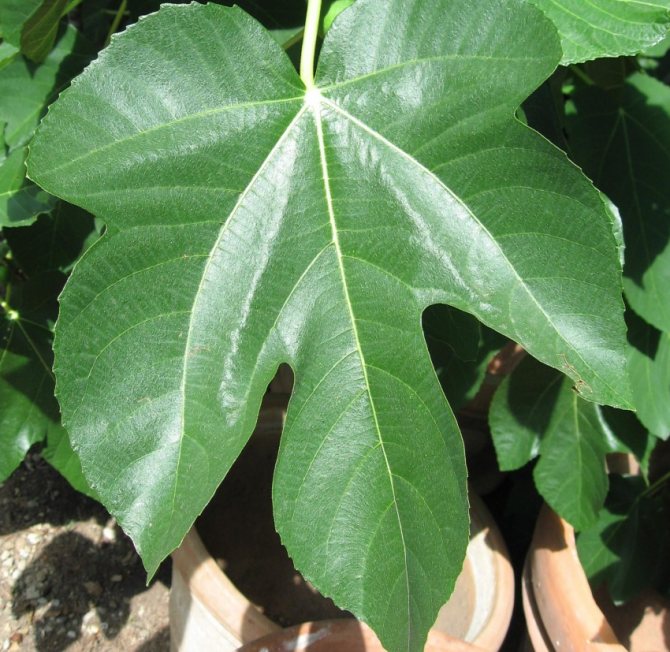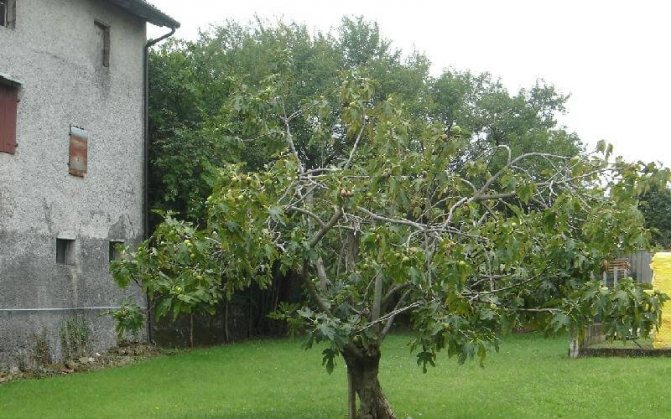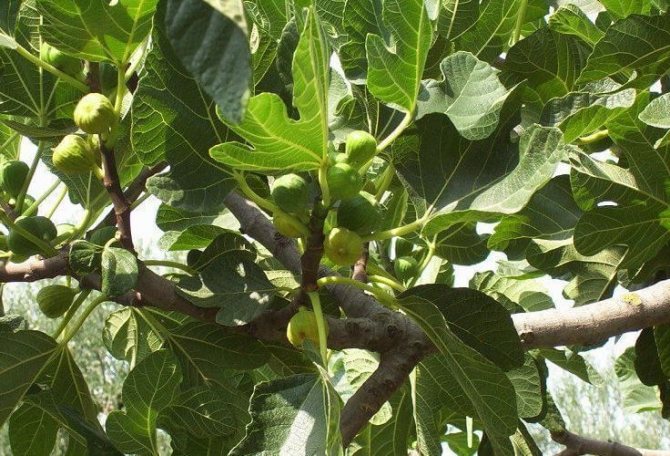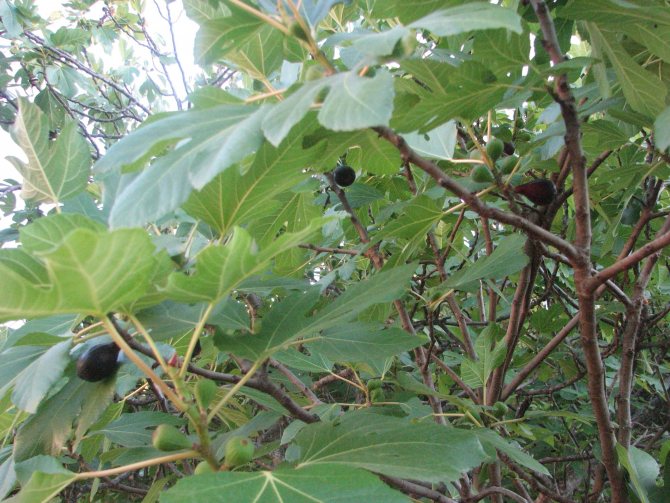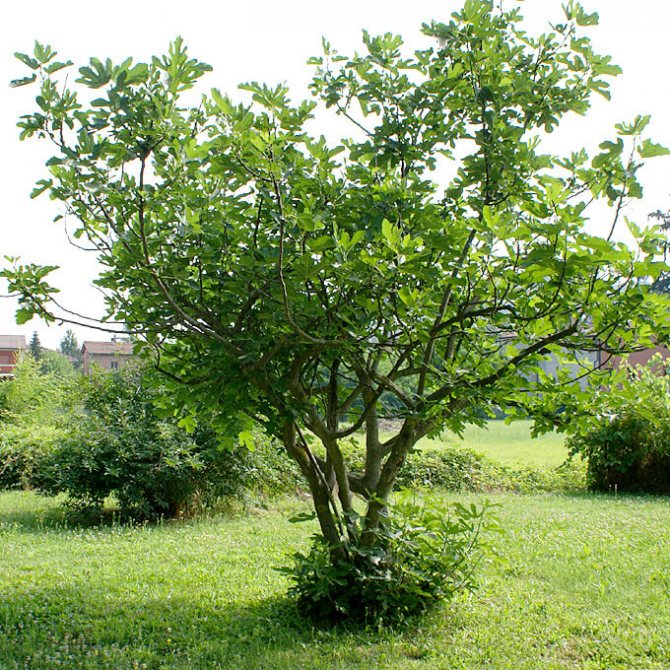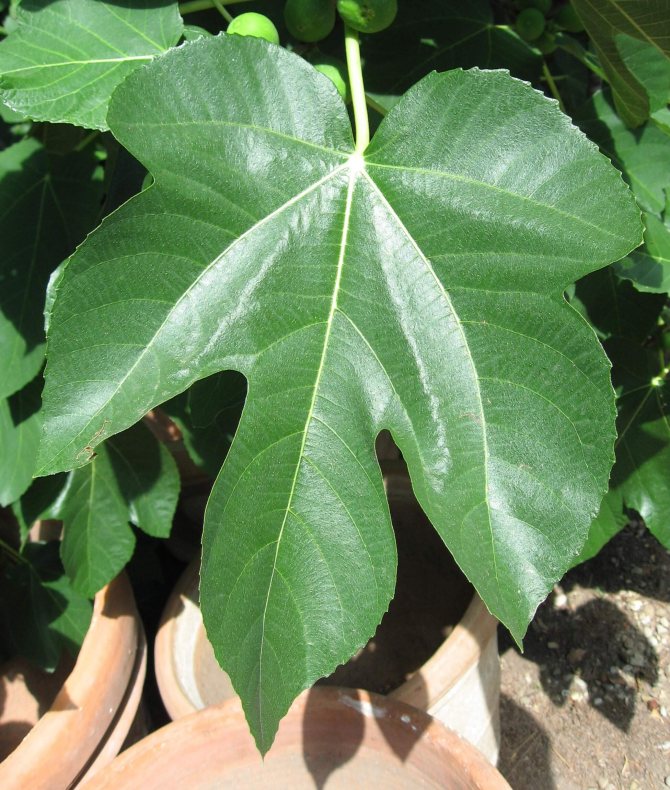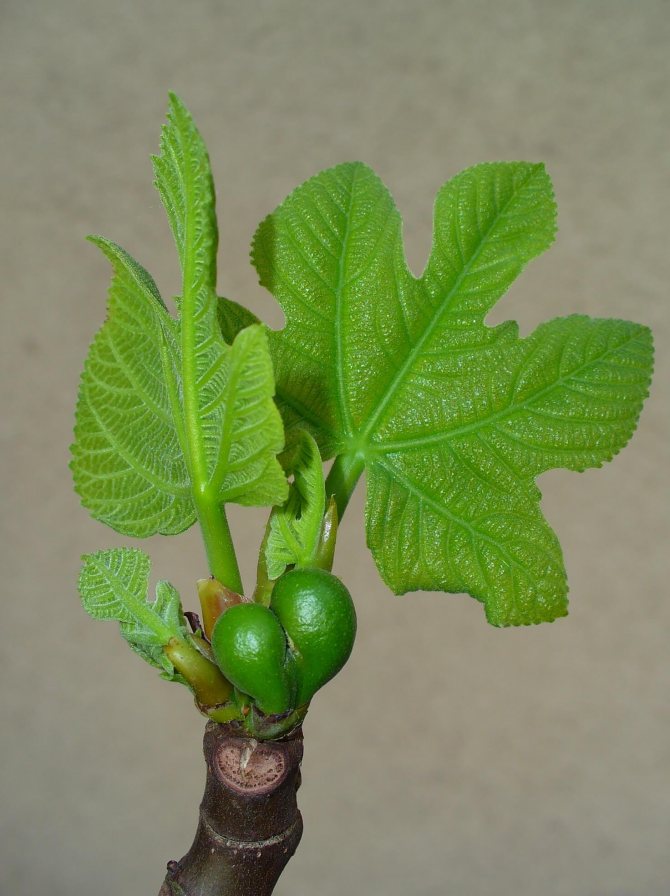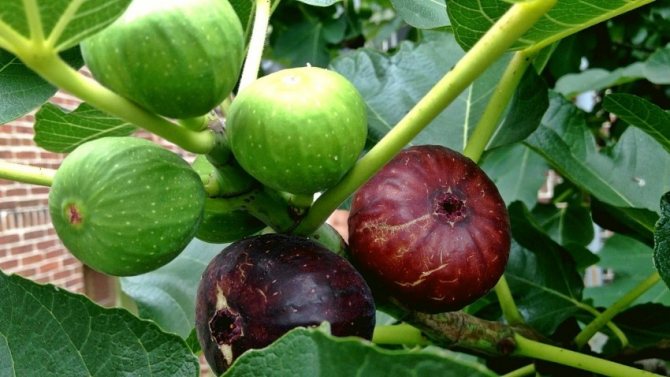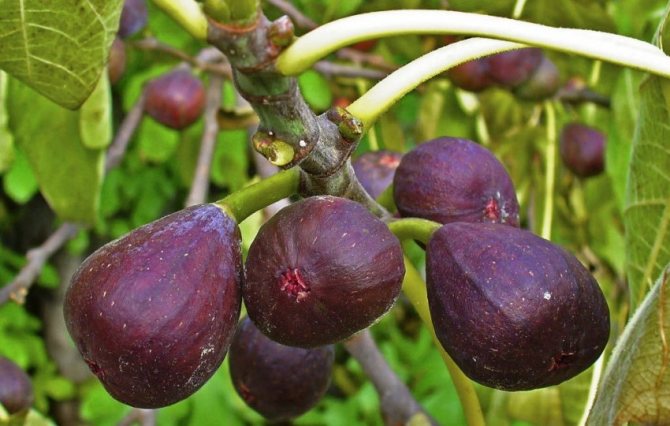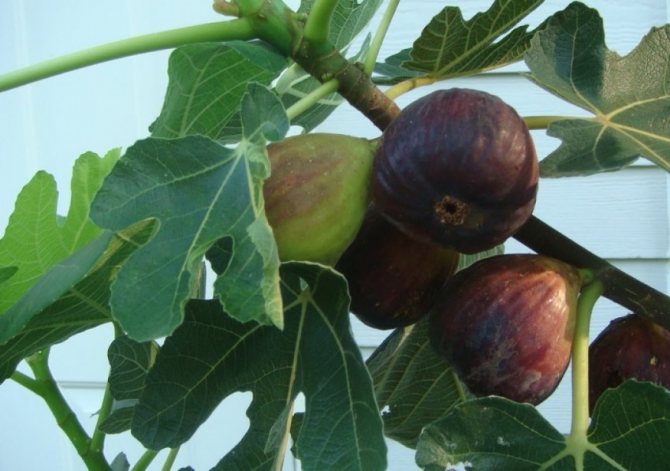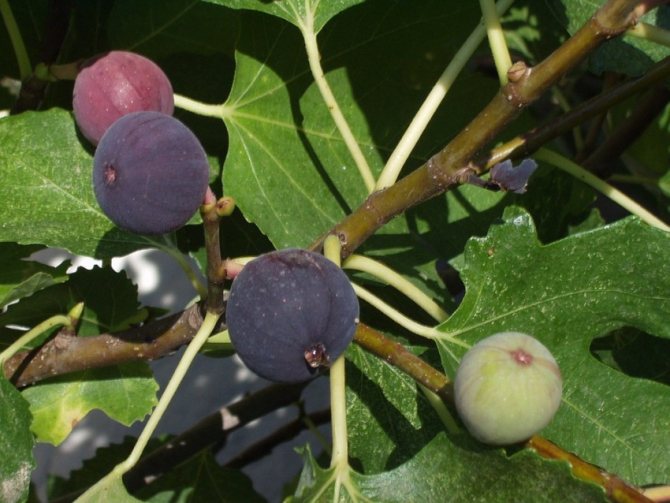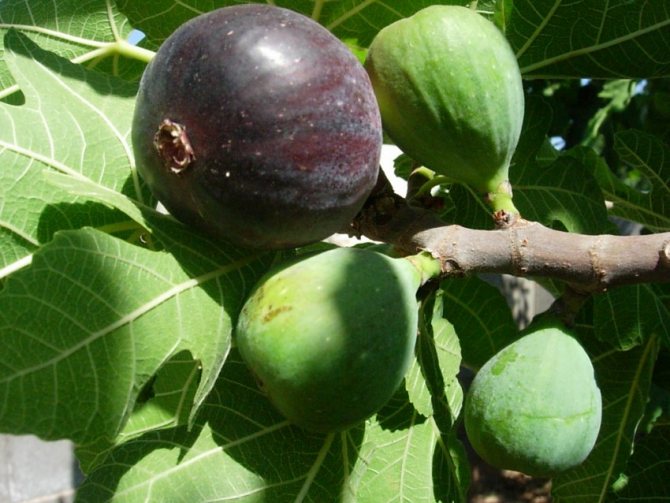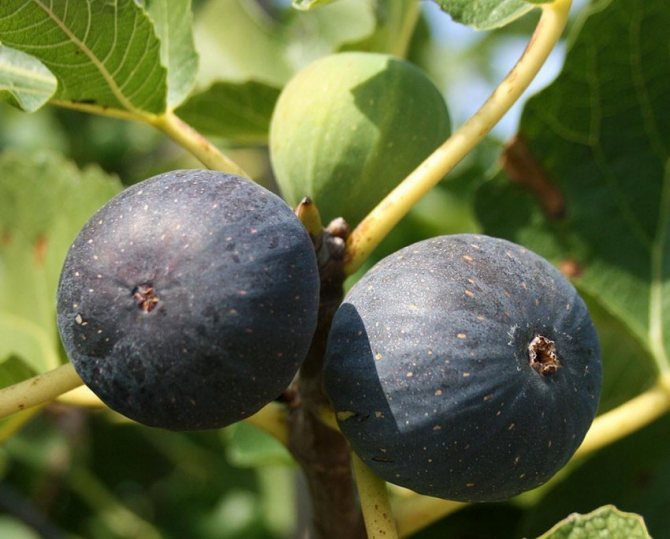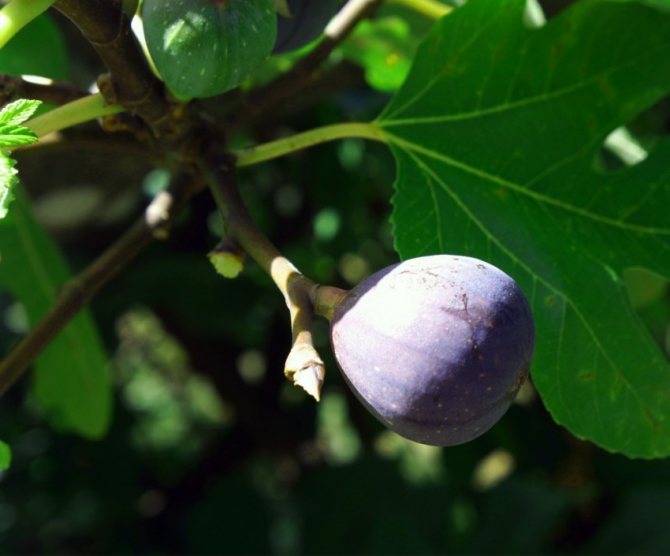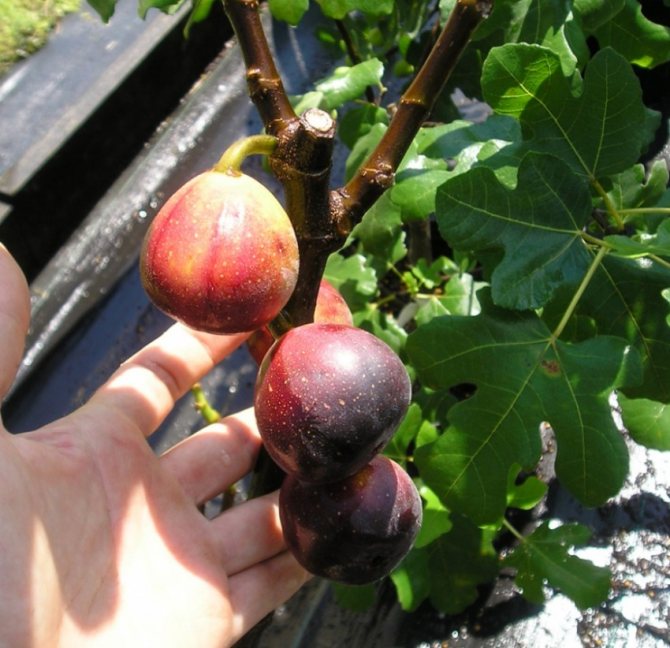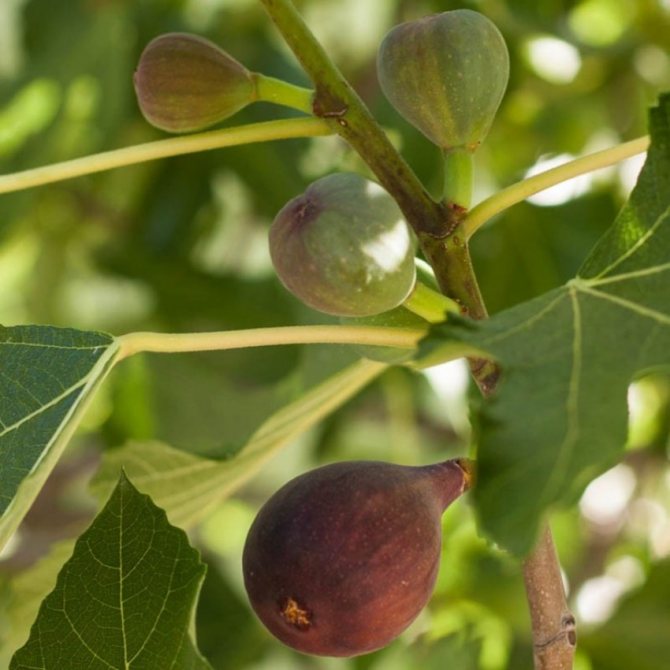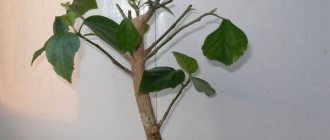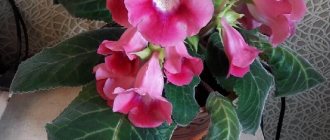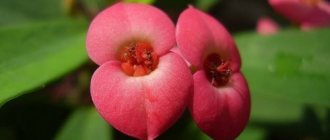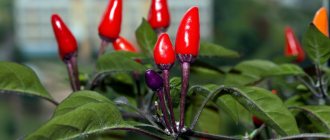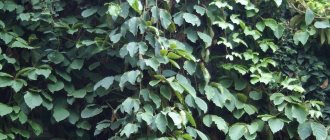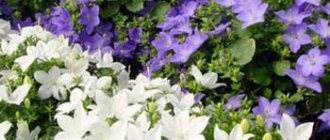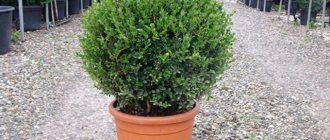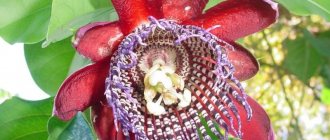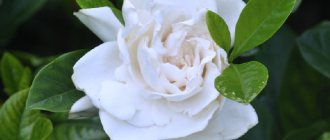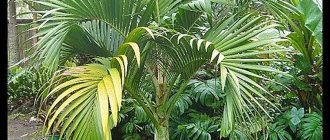During its existence, figs have acquired many names. It is called a wine berry, fig or fig tree, fig or fig tree. The genus of figs is deciduous ficus. The plant is a bushy tree that can grow up to three meters in height.
Some specimens can reach fifteen meters. The trees are covered with light gray bark and consist of thick, weakly branched branches. Hard, hairy leaves, beautifully carved. The outer part of the leaf plate is green and the inner part is grayish green. In case of damage to shoots or leaves, a thick milky sap is intensively released.
Fig photos
Many people know what dried figs look like because they are in this form, it goes on sale in Russia and other countries. Photos and information about how the tree, its seeds and flowers look like - will help you find out many interesting facts about this plant.
Tree (bush)
On the territory of the Mediterranean countries and in Asia, wild fig trees grow to large sizes under favorable conditions. The plant consists of one (up to 18 cm in diameter) or many trunks, fused together, and can reach a height of 10-12 m. The extensive and spreading crown further increases its size.
In countries located closer to the north (Georgia, Uzbekistan, Azerbaijan, etc.), figs grow as a shrub with a maximum height of up to 8 m.
For indoor cultivation, several specially bred varieties of fig trees are used. At home, this plant looks like a small bush. Caring for him is carried out in a similar way to decorative ficuses, of which figs are relatives.
Fresh fruit
Fig fruits are pear-shaped, slightly elongated or spherical, their size can reach 10 cm. They are small in size and easily fit in a human palm. Outside, the figs are covered with hairy skin, and at the top of the "eye" is a hole covered with scales.
Fig color and shape are varied and depend on the variety:
- black figs have a black-purple rind, the flesh is red;
- white figs have a thicker and lighter peel, the flesh is honey-yellow or red;
- yellow-green varieties have red sweet flesh inside.
Each fruit contains up to 16 thousand tiny grains or about 30 larger ones.
Dried fruit
Various dried fruits in the autumn-winter period are in demand among the population; they can be found on the shelves of supermarkets and markets. Dry figs are brought to Russia from hot countries. It can be eaten alone or added to cottage cheese, yogurt and fruit salads, baked goods and meat dishes.
When choosing dried fig fruits, it is recommended to pay attention to their appearance:
- the shape of the dried fruit should be flattened;
- fruit color - beige or light brown, matte;
- on some, the presence of a white bloom is permissible, which consists of glucose protruding outward;
- experts do not advise taking crumpled fruits or fruits with spots on the skin;
- the fruits should be soft to the touch, their hardness indicates overdrying.
Flowers
Ancient people argued that no one can see how the fig tree blooms.Therefore, in China, the plant is called "uh-wa-go", which means "fruit without flowers." However, they were wrong.
Scientists have proven that it is difficult to see the flowering of figs, because the flowers are located inside the pear-shaped inflorescences-syconiums. These flowers look like small hollow balls that are stored in pear-shaped syconiums. And on top of them there are tiny holes. The first inflorescences appear in spring, growing from the axils of young shoots.
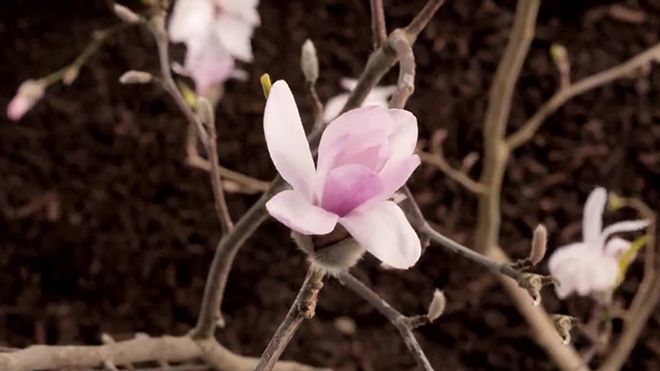
Seed
The above photos show that the seeds of the figs are small (1-2 mm) and look like the smallest nuts. For those looking to grow a fig tree in their home, seed can be obtained directly from ripe fresh fruit. In a dried state, seeds can be stored for 2 years without losing their germination.
Growing figs from seeds is a long and laborious task. Pecking of soaked grains has to wait 2-8 weeks (if kept in a warm room with a temperature of + 25 ... + 27 ° C). During the growing season, the plant needs warmth and sunlight, so in summer it is better to put it on the south side of the balcony and water it abundantly. A decorative fig can begin to bear fruit only for 4-5 years.
In the context
If you cut a fresh fig fruit, you can see numerous small grains - the more there are, the tastier the fruit will be.
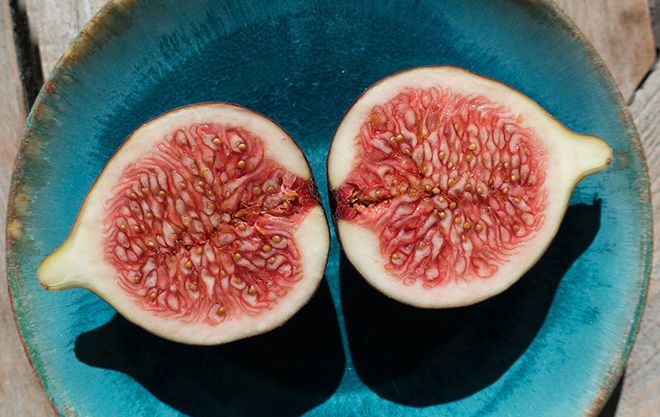

Growing from seeds
If a gardener does not know how to plant a fig using seeds, then the next option will come in handy. Its peculiarity is that it is necessary to sow from the end of winter to the beginning of spring (February-March). In the event that the seed is taken directly from the fruit, it must be taken out together with the pulp, and then transferred to a glass jar, adding a small amount of water. After a short period of time, when everything has fermented, the seeds are thoroughly washed with water, while removing those that float up. Having carried out the necessary manipulations, the resulting material should be sown into a box with soil to a depth of no more than 0.6 cm.
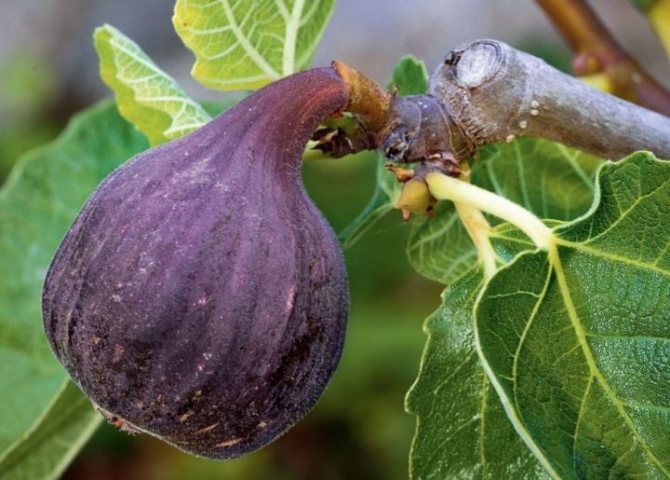

Fig
In order for the seeds to germinate successfully, it is necessary to cover them with glass or polyethylene film. The beneficial temperature for the germination process is + 21 ... + 24 ° С. Remember that the seed of this plant is photophilous, so the box should be near the light source. Within 30 days, the first shoots will appear. During this time, it is sometimes necessary to remove the insulating coating in order to water and ventilate the seeds.
The sprouts that have broken through, which already have 2-3 formed leaves, are transplanted into pre-prepared containers with a special substrate. It can be prepared as follows: the bottom of the container is lined with drainage (most often - expanded clay) with a layer of 1.5 cm, a soil mixture is poured on top of it, similar to that for ordinary ficus, and the final layer is fine sand, which is washed and heat-treated, about 2 , 5 cm.
Pictures and drawings of figs
Pictures of trees, pictures of the leaves and fruits of the fig tree are of great interest.
Crown formation
The moment when the buds swell symbolizes that it's time to start shaping the crown for the tree. To begin with, you should cut off almost all branches, leaving a maximum of 4-5 of them. When the tip reaches the 23 cm mark, they begin to pinch it. This manipulation avoids overgrowth of side branches. They should be shortened by almost a third of the total length so that the lower shoots do not begin to weaken.
Remember that those buds that are directed towards the center of the crown are subject to pruning. If you follow this carefully and carefully, the crown of the fig will look elegant, consisting of 5 vertical branches and shoots on the sides. The crown in the form of a Chinese fan also looks aesthetically pleasing, thus you can favorably emphasize the interior of the room. At the same time, the tree not only looks beautiful, but also bears fruit more abundantly.To achieve this result, make the clothespin starting at the topmost kidney.


Fruit without a flower
Remove branches that grow directly into the crown itself, while leaving shoots running horizontally. This will contribute to the abundance of fruit in the future. The crown will reach a fan shape if you leave a pair of horizontal parallel branches when pruning.
If you are not attracted by the appearance of the tree, then cut immediately above the bud - this will greatly increase the number of shoots that will delight you with fruits. At the same time, the fig will not become a decoration of the house, but it will give twice as many fruits.
Interesting facts about figs
A few facts from the long history of fig tree cultivation:
- The fig tree is mentioned not only in the Bible, but also in the Qur'an as a tree that Allah Almighty gave to people. He pointed to its health benefits. According to scientists, the leaves of the paradise tree mentioned in the Koran and intended to cover shameful places by the first man Adam and his wife Eve (Havva) belonged to the fig tree. Thus, fig leaves can be considered the first clothing of people.
- For a long time, it was not possible to cultivate a fig tree on the territory of the American continent, which was due to the absence of insects that pollinate this plant (bees with blastostom). Only after breeding this species of insects were American residents able to get the first crop.
- According to historians, the great commander A. the Macedonian specially took dried figs with him on military campaigns - they helped to quickly satisfy hunger and contributed to the restoration of strength on a long journey.
- In ancient Greece, the export of figs outside the territory of the country was punishable by a court similar to high treason.
- Another fan of figs was Queen Cleopatra, who happily ate sweet fruits that helped her to prolong her youth and preserve her beauty. According to Egyptian legend, the snake that the queen used to commit suicide was brought along with these fruits in a basket.
- The ancient physician Avicenna was one of the first to successfully use fig fruits for the prevention and treatment of various diseases, many of his achievements are also used in modern pharmacology, for example, for the manufacture of laxatives and antitussives.
- The ancient scientist and "father of botany" Theophrastus, who lived in 3-4 centuries. BC, in his manuscripts described more than 100 varieties of fig trees, some he even gave his own names.
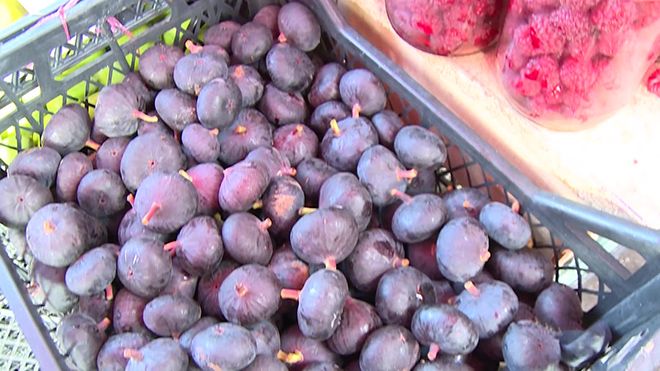

Is it a fruit or a berry
The history of the discovery of figs is associated with many interesting properties of the plant, which has put biologists in deadlock situations. The famous botanist Karl Linnaeus was also not immediately able to unravel the secrets of this long-lived plant.
According to the botanical classification, the fig is not a fruit, fruit, berry, or even a vegetable. Fig is a fig tree, which, after pollination of the inflorescence, is covered with a skin on top, and its seeds are overgrown with tasty pulp.
Due to the content of soft fiber fibers in fruits, which dissolve easily, figs well retain animal saturated fats in the digestive organs and intestines, which helps prevent their penetration into the blood, incl. and bad cholesterol.
It is interesting that the quality of the fruit depends on the number of seeds in it - the more there are (up to 900), the better and tastier the fig will be. The most delicious variety is Samarkand.
The fig tree and the fig are the same
Both names refer to the same plant, which in different countries is called fig, fig tree and wine berry.
The fig fruit contains a large amount of the substance tryptophan, which has a beneficial effect on the functioning of the brain and nervous system.According to the conclusion of scientists, it allows a person to increase efficiency in stressful conditions, helps to improve sleep and adequately respond to unpleasant situations, i.e. is the best cure for depression.
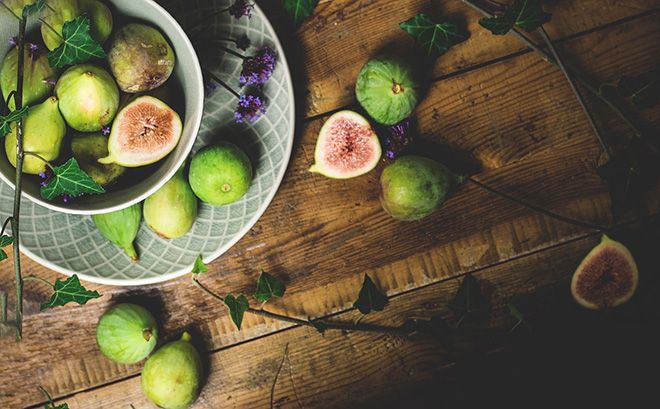

Tree or shrub
In the wild in hot subtropical countries, the culture grows in the form of a large tree with a powerful crown. However, in countries with cooler climates, it grows in a shrub much smaller than the southern varieties.
Fig trees have good vitality and grow on any soil, starting from rocks, where the root of the plant can catch on. For such properties, he is often mentioned in folk songs and legends, praising his ability to add strength to travelers passing by.
Transfer
The rules for transplanting a fig tree will be useful for both a beginner and an experienced gardener to know. With the arrival of real spring, when the sun begins to warm for real, it is necessary to take the pot with the tree out into the open air. Keep in mind that a young fig has a tendency to rapidly expand the root system, so transplanting must be done annually, otherwise inaction threatens the death of this representative of the flora. In the time interval, the process must be carried out before young leaves appear.
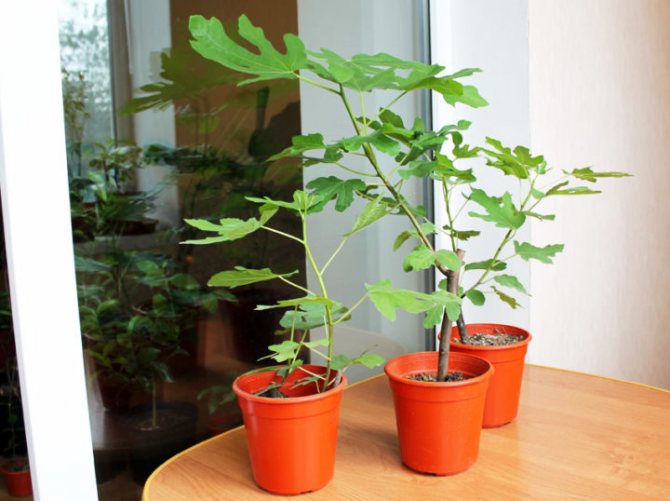

There is still a long way to transplant
If your tree has been growing for more than 6 years, you need to replant it every 2-3 years. It is important to take into account that the container into which the fig is transplanted must be 4 cm wider than the previous one. However, do not overdo it: too large an area is harmful to the tree due to the fact that the overgrown rhizomes will begin to affect the yield level.
An indispensable element for transplanting is a drainage system that lines the bottom of the tank. Experienced gardeners recommend leaving the root collar on top, while giving preference to such a place for the tree, where there will be an abundance of light. The formation of the crown is also an important point that affects the health of the fig and the number of its fruits.
Fig varieties
Suitable for growing plants Fig of the following varieties: Crimean Black, Adriatic White, Brunswick, Dalmatian:
- Brunswick... It is the most frost-resistant variety and grows in frosts up to 29 ° C after warming for the winter. It has greenish fruit and has a purple blush on it. Fruit weight - up to 45 g.
- Dalmatian... It tolerates cold up to - 15 ° С. Fruits are greenish, pear-shaped, reach weight - up to 90-180 g. It differs in juicy and sweet pink pulp.
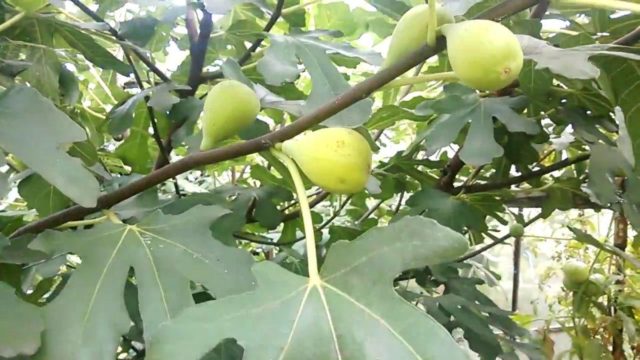

Fig Dalmatsky - White Adriatic. Differs in small, but juicy and sweet fruits, weighing up to 35-40 g, light green skin and pink pulp.
- Crimean Black or Moisson. Fruits weighing up to 30-40 g have a dark purple skin. The pulp is distinguished by a sweet taste with a sour taste and the presence of a pronounced aroma.
In cool regions, the Turkish brown fig tree is more often grown, the reddish-brown fruits of which ripen in the third decade of August. In September, the figs of the Date Neapolitan variety ripen, he has purple-red figs. A partially self-fertile fig is suitable - early Sabrucia Pink and the Crimean Black variety.
Description
The plant is long-lived. Reaches eight meters in adulthood. In the literature, there is a mention of trees that have reached the age of 200 years.


In nature, a tree can live up to a hundred years. Has a dense, wide crown. The bark is light brown. Fig leaves are large, hard to the touch, reminiscent of maple leaves. It is a plant shedding foliage.
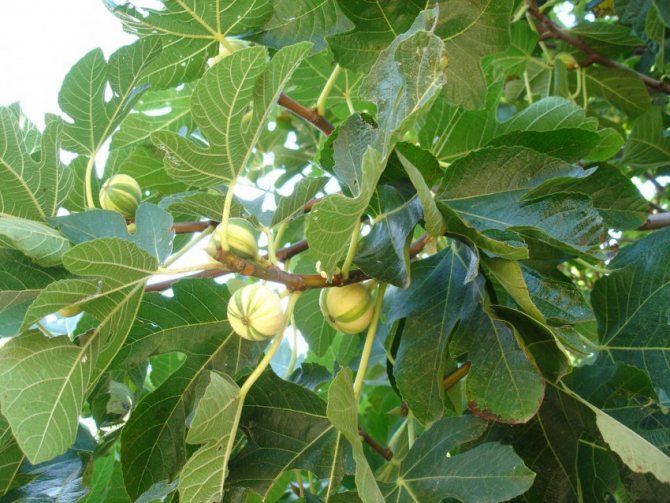

In warm latitudes, where the temperature in winter does not drop below plus five degrees Celsius, figs do not shed their foliage at all or drop for two or three months. It can develop as a bush.
Contraindications to use
Figs are not recommended for people with:
- diabetes,
- obesity,
- gastritis,
- urolithiasis,
- ulcers of the gastrointestinal tract.
The use of figs is contraindicated in diabetes mellitus. Because the large amount of sugar it contains can cause hyperglycemic disorders. You should be wary of this berry in case of obesity due to its high calorie content, gastritis and ulcers of the gastrointestinal tract, because figs irritate the mucous membrane of these organs.
How to grow?
Irga is an unpretentious beauty, it is enough to choose the right place for her and prepare the soil.
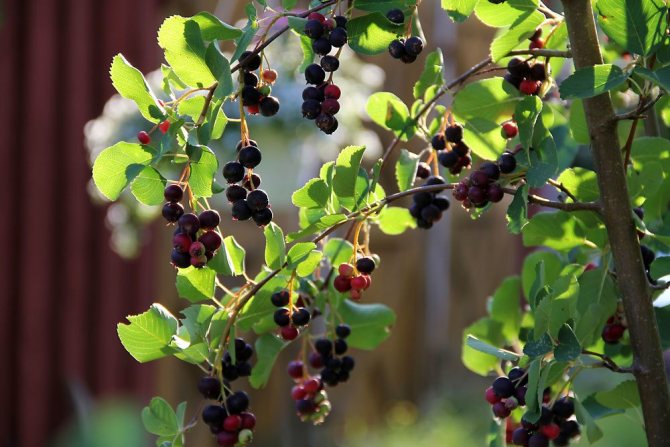

Growing a wine berry will not be difficult.


Small bushes of cinnamon in landscape design
How to plant?
Planting is carried out in the spring or in the fall, but experts advise planting a wine berry in the fall, so it develops better. The plant will need a well-lit place, then the shoots will not stretch out in search of the right amount of ultraviolet radiation, and all the power will go into the right direction to form the size and juiciness of the fruits.
1
4
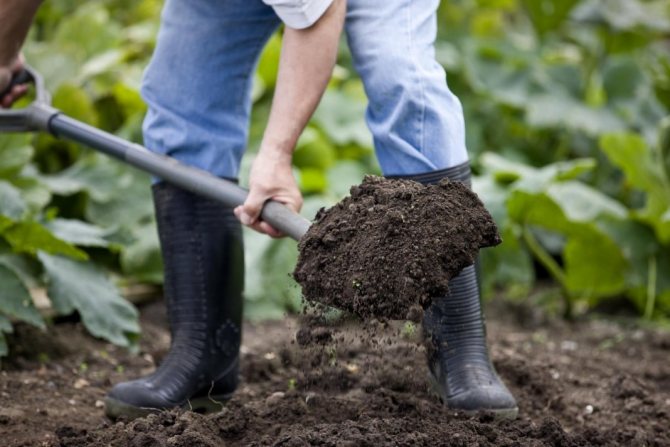

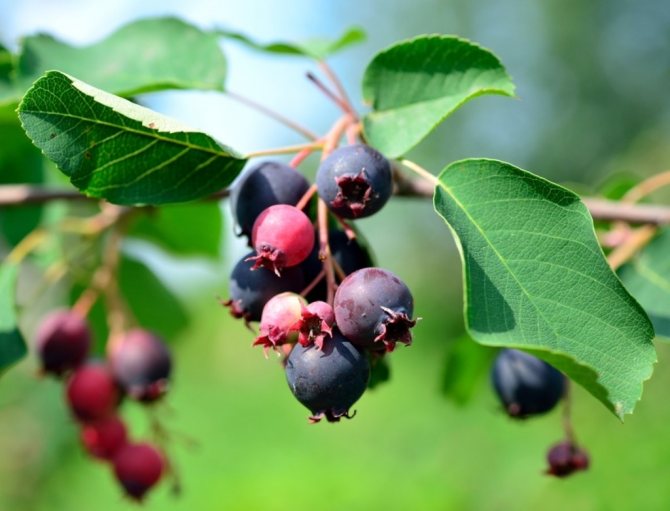

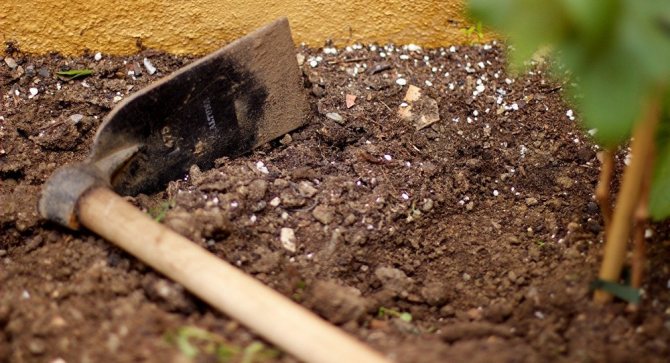

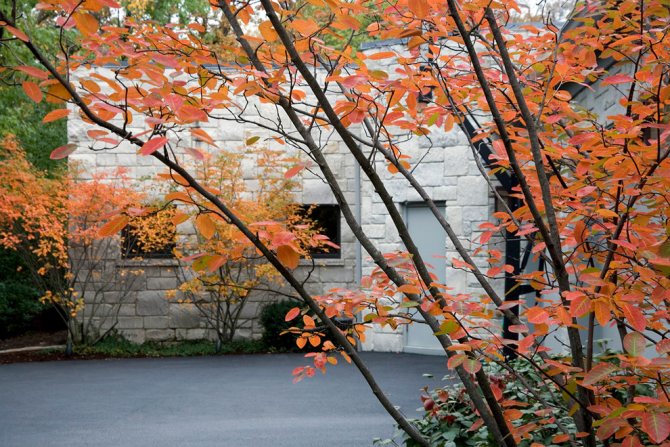

The soil should be sandy loam, but loam is also suitable, the main thing is that the soil is fertile, this will avoid excessive growth of growth around the roots and increase the number of berries. Acidity does not matter; before planting, it is important to carefully dig up a place for the bushes with the addition of potassium-phosphorus fertilizers.
Advice! The depth should be about 10/15 cm, and the fertilizer dose should be at the rate of 40 g per square meter.
Nikitsky Botanical Garden
Since the beginning of the next century, scientists from the Nikitsky Botanical Garden have seriously taken up figs, who began not only to study the plant, but also to develop different varieties, of which there were already 110 in 1904. Today, including imported selection, the garden's collection includes more than 200 species of figs. In the botanical garden, you can buy seedlings of different varieties, including those adapted for different regions of Russia.
Most often trees are found on the South Bank, where in the markets you can see purple and white berries, dried, dried and canned. Where figs grow in Crimea, there is an opportunity to buy fresh fruits, and imported varieties on the shelves are extremely rare. Fresh, they simply do not reach us, since they do not tolerate long-term transportation. If, nevertheless, it was possible to meet such fruits, then you need to choose them carefully. They should be undamaged, dense, but squeeze through with a slight pressure.
Delicate, sweet wine berry, a treasure trove of nutrients
So, what we call the fruit of a fig tree is actually its fruit, moreover, as if turned inside out, so that many small fruits are located inside. Delicate, juicy pulp develops from the axis of the inflorescence, on the outside it is covered with a thin skin with fine pubescence, giving roughness. The taste is very sweet, sometimes with sourness, with a specific aftertaste.
The name "wine berry" was probably given to the fruit because it spoils very quickly, and fermentation begins a day after removal. Therefore, no matter how tasty the fresh fruits are, they have to be quickly processed into jams, preserves, marmalade, marshmallows, compotes or dried. The main producers of figs - Turkey, Italy and Greece - supply them to the market mainly in processed or dried form.
Video about the benefits of figs
The calorie content and sugar content of the "wine berry", especially the dried one, are so high that they give a noticeable burst of energy and a feeling of satiety. The soldiers of Alexander the Great always carried them with them. In terms of iron content, this fruit surpasses even an apple, in potassium it is second only to nuts. There is calcium, phosphorus, copper, iodine, a rich set of vitamins (C, B, PP), a lot of useful plant fiber.
The abundance of nutrients in the Smyrna berry has a beneficial effect on the entire body - on the cardiovascular system, kidneys, liver, stomach, it is useful for anemia, reduces blood clotting, has antipyretic and anti-inflammatory properties, milk decoctions are an excellent folk remedy for colds. Contraindicated in gout and diabetes.
Care
Following the care recommendations increases the stability of the figs and their yield.


Fig care
Watering mode
The seedlings are watered very abundantly after planting.In the future, the frequency of watering is reduced to several times a month. However, it is impossible to completely stop watering during the formation of inflorescences, because the plant is moisture-loving. Mulching is recommended to conserve water.
Watering stops only during the period of fruit ripening. The last time the plant is watered after harvesting all the fruits. This increases its frost resistance.
Top dressing
The rules for feeding the plant are as follows:
- Nitrogen fertilizers are applied in the first third of the growing season.
- Phosphates should be added in the middle of summer.
- Potash fertilizers are applied in late summer and early autumn.
- Every month, microelements necessary for the growth of the tree are introduced.
- Foliar dressing is carried out 2 times a month.
- From organic fertilizers, ground, humic acids are applied.
Why figs do not bear fruit
Readers are interested in why figs drop fruit. The plant may not bear fruit due to pests. The most common:
- moth (causes rotting of the fruit, due to which the flowers fall off and crumble);
- leaf roll (affects the plant so that the leaves can turn yellow, the fruits rot, the stem dries up, the figs stop flowering);
- the louse slows down the development of the stem;
- the bark beetle attacks the bark, causing the plant to die off.
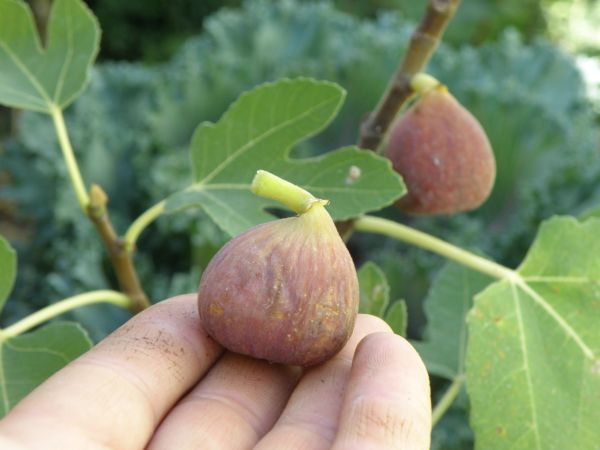

Beetle
Top dressing during fruiting
During the fruiting period, potash fertilizers are applied. It is important to feed the plant before the end of the growing season, i.e. when the second stage of fruits ripens.
Preparing for winter
In autumn, when all the leaves have fallen, the bushes bend to the ground. Then they are tied, sprinkled with earth or dry leaves. You can cover the plant with layers of leaves or spruce branches, additionally protect it from above with ruberoid.
Note! You need to bend the branches very carefully so as not to break them off.
When frost comes, the branches are covered with black spunbond (in 2 layers). After a while, the plant is additionally covered with a layer of plastic wrap.
In the spring, the shelter is gradually removed. It can be completely removed only when stable spring weather is established without the return of frosts.
Fig is a beautiful thermophilic plant that adorns the garden and bears tasty fruits. It is not difficult to grow it, despite its vulnerability to frost.
Interesting Facts
The fig tree is a close relative of the indoor ficus and the distant relative of the mulberry. Knowing about their relationship, scientists have spent many years to cross the figs with frost-resistant mulberries. In America, the famous scientist Luther Burbank tried to implement this idea. However, the Crimean naturalist Ya.I. Bomyk. In the harsh winter of 1950, when frosts reached -20 ° C, ordinary figs died out, only the fig-silk hybrid Bomyk survived.
In the gallery below are photos of a fig tree, which clearly show all the characteristic features of this amazing and unexplored plant.
Photo gallery
Where does it grow?
According to many historians, the fig tree became the first plant cultivated by man, which began to be cultivated 5 thousand years ago. The historical homeland of ficus is Saudi Arabia, where the plant is widely used in the food and medical industries. Over time, the area where figs grow has spread to Europe and the Canary Islands.
Back in 1530, ficus was first tasted in England, from where the seeds were imported to South Africa, Australia, Japan, China and India. The history of American figs dates back to 1560, when the imported seeds began to be grown in Mexico.
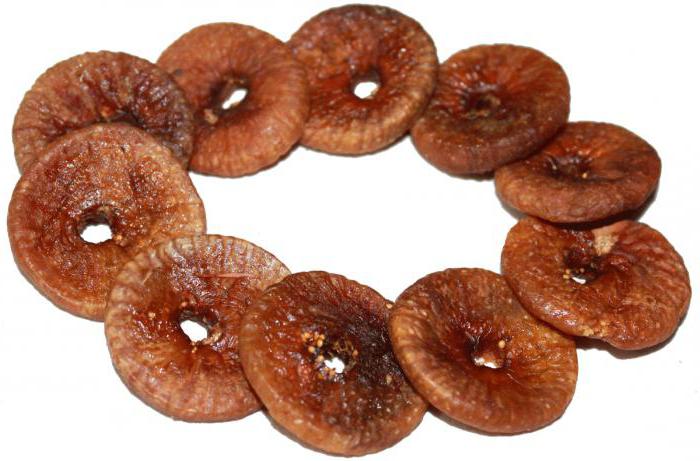

In the Caucasus region (Georgia, Armenia, Azerbaijan) and on the black coast of Russia (Abkhazia, the southern coast of Crimea), ficus has been growing for a long time. Where figs grow in the wild in Russia, the climate is warm and dry. Large areas of plantations are located in neighboring Turkey, Greece, as well as in Italy and Portugal.
In Venezuela, this fruit is one of the most popular today. In 1960, a state program was created, thanks to which the serious development of the industrial production of this culture began. In Colombia, figs have long been considered a luxury. Today, the attitude towards fruit has changed, because figs grow here in every garden. The conditions turned out to be too favorable, but the love for the berry did not diminish.
Flowers
How does figs bloom? Few, seeing small unripe pear-shaped fruits, understand that these are tree flowers. They abundantly cover the branches of the plant. Most fall off.
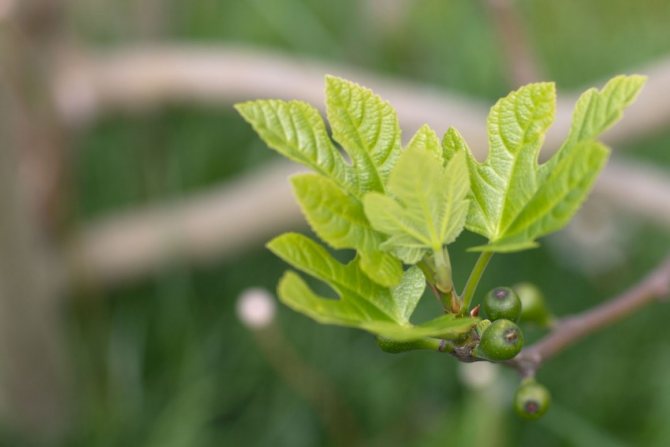

When cut, you can see several dozen inflorescences inside. They have a nondescript appearance. These are the flowers of the plant. When figs ripen, they transform into grains with white fibers.
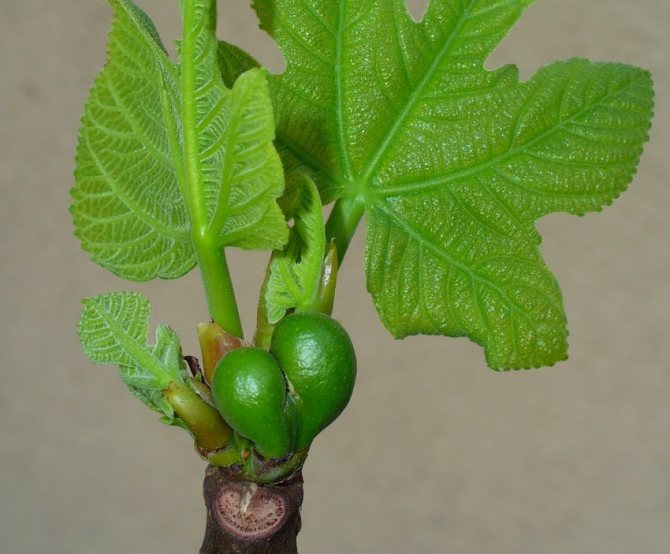

The plant has both female and male flowers. Female flowers have 5 small petals and 1 pistil, male flowers have 3 petals and 3 stamens.
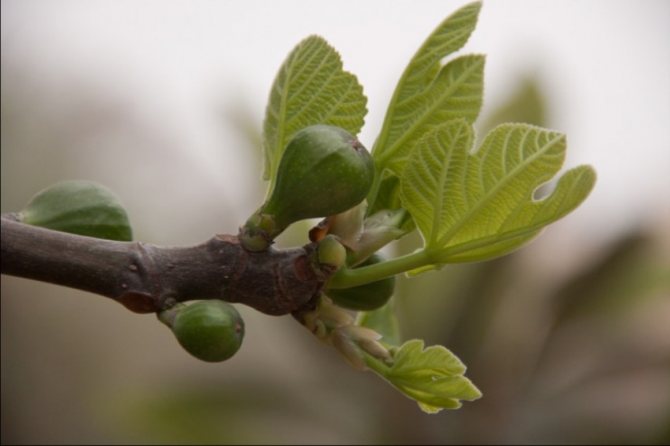

Features of home cultivation
At home, the tree is planted in a solid pot with a sand-compost mixture of garden soil. It is worth choosing from undersized varieties. In warm weather, the pot with the plant is taken out to the balcony or street. When the trunk reaches 60 cm, it is pinched.
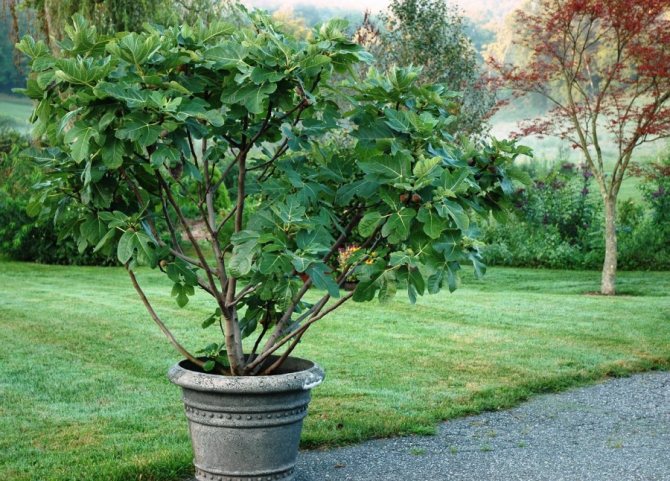

The soil and the pot are changed every year, the tree develops quite quickly and it needs a place for comfortable fruiting. The soil in the pot is regularly loosened to provide oxygen to the roots.
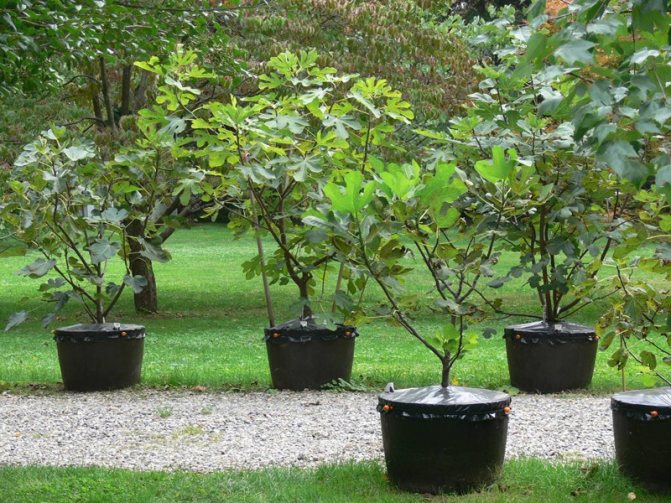

In a city apartment, figs can delight with fruits 2-3 times a year. During the ripening of fig trees, the tree needs a little more heat and light. During the dormant period, it is worth placing the plant in a cool place and limiting watering.
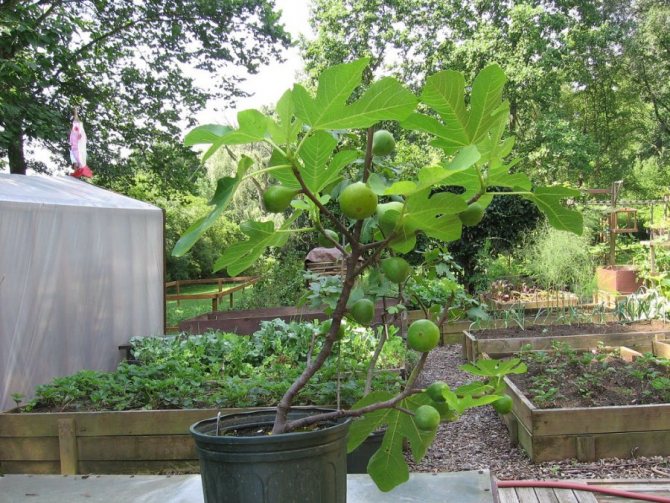

Why is a fig tree?
The plant in question has many names, each country has its own. The Russian version is a fig tree, because its fruits are figs. In another version, they are called figs, and the tree, by analogy, is called a fig tree. The most famous and common name for him is fig. In the scientific world, this is Fícus cárica. It is believed that the birthplace of the plant is ancient Caria, which existed before the Trojan War. For a long time there are no Carians or Caria, only the ficus that bears her name remains. Craftsmen make wine from figs (or figs). Therefore, another name for the plant is wine berry.
Ripening of the crop
Indoors, fig trees can bear fruit 2 times a year - in June and October, but only after 4-5 years of life, or even 7 years. During the growing season without harvest, trees can simply decorate with magnificent greenery any premises where there is no direct sunlight.
The flowers are inside the receptacle: male - in the upper part, female - on the walls of the receptacle. The flowers are pollinated by a small wasp - blastophagous. In many varieties, compound fruits are parthenocarpous (develop without fertilization).
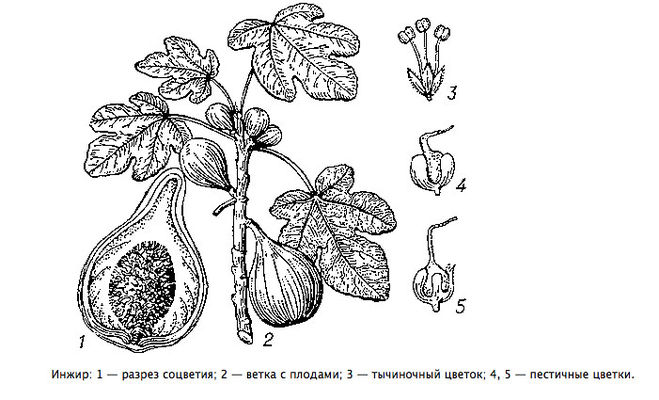

Fig is the only plant in the world that has a very original flowering, although it gives fruit. The wise Chinese have nicknamed him "Fruit without a flower" and indeed, to an ignorant person it may seem that figs have no flowers at all. But in fact, there are tiny flowers, but they are hidden from the sight of curious people.
From a botanical point of view, the fig fruit is a flower, and its inflorescences are turned inward. In April-May, in figs in the axils of leaves, you can see tiny green ballshaving holes at the top. The ball is the flower: the inflorescence. Some trees develop only female inflorescences, others - male ones. And the fruits themselves are formed only on female trees.
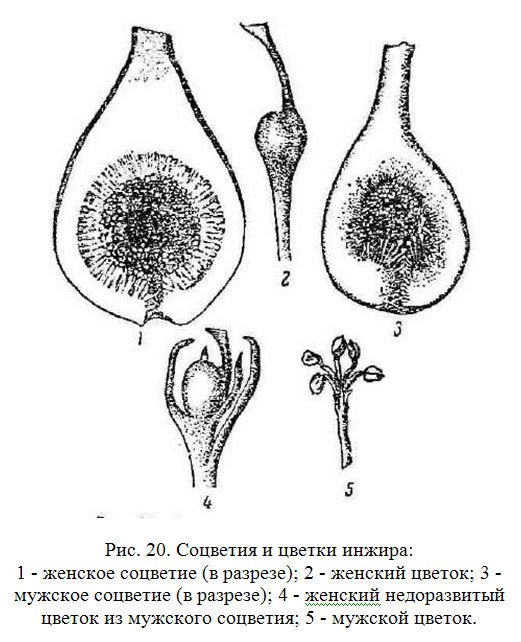

The only pollinators of figs are tiny blastophagous wasps, and if for some reason there are no wasps, then there will be no fruits.
Fruit
Ripe figs, without juiciness, have a rich sweet and pleasant taste. There are many small grains inside the fruit. Covered with a dense skin.
There are a large number of species, but plants with green and black fruits of various shades prevail. They can also be of different sizes.
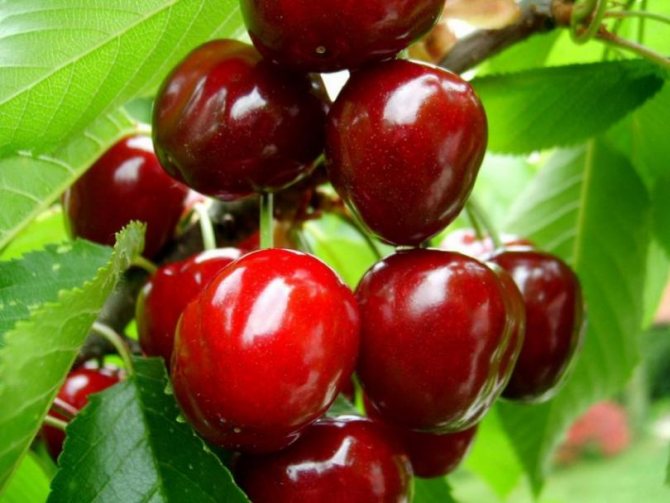

Where the cherry grows - the conditions for the maintenance and growth of the tree. Tips for choosing a place on the site and choosing neighbors for cherries (145 photos)- Poplar tree: description of the main types and useful properties of wood. Tips for choosing a landing site and care features (110 photos and videos)
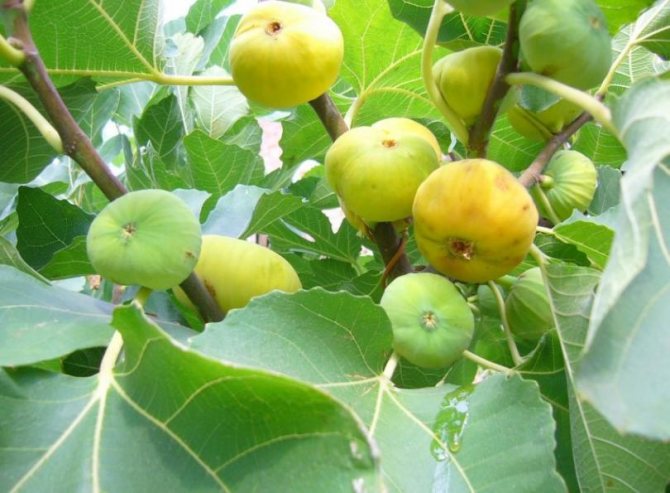

Figs growing at home - tips and instructions for care and maintenance in a room (155 photos and videos)
Large fruits have a presentable appearance, but do not have a rich sweetness. They are very rich in vitamins and all kinds of trace elements.
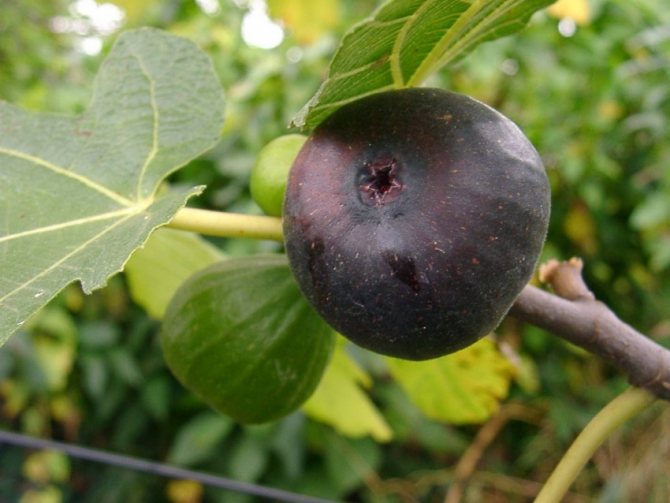

Use in cosmetology
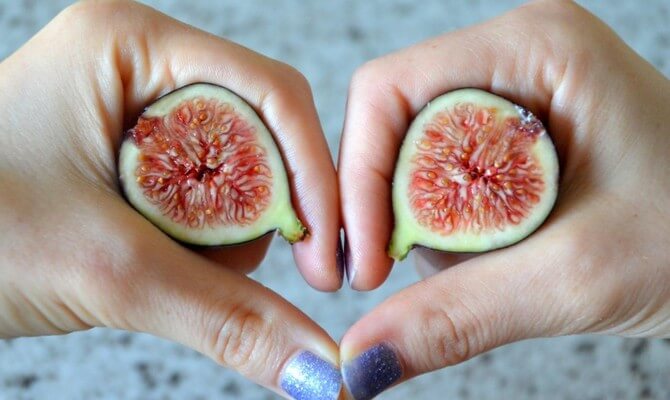

A puree of fig pulp applied to your face can help relieve acne. Cosmetologists advise to apply therapeutic masks daily for 15-20 minutes. And milk juice from a fig stalk will help get rid of warts and corns. Gruel from baked fruits heals boils, abscesses, inflammation of the skin. The antioxidant properties of fig juice will return the skin to its beautiful color, radiance, and smoothness.
The pulp of the fruit is suitable for making homemade scrubs (mix with sugar and a little olive oil) and a variety of masks. One of the most effective masks for improving skin tone consists of fig pulp, powdered ginger, oatmeal and a few drops of bergamot essential oil. And the skin of a fresh fig tree will help to restore smoothness to the skin, with which you should wipe your face.
The medicinal properties of figs are also beneficial for hair. In particular, masks based on fruit mass make curls obedient, smooth, shiny, moisturize them and prevent the appearance of gray hair.
Pest control
Due to the fact that the fig tree is not often found at home with gardeners, it is especially vulnerable to various misfortunes in the form of diseases and parasites. The most harmful among them is the spider mite, the activity of which occurs during the period when the room is artificially heated, which causes a dry atmosphere, where the parasite develops. If a tick is found, it must be eliminated immediately by flushing the affected areas with cool water. After that, it will be effective to treat the bush with actellik solution.
Do not be lazy every day to spray the tree with water so that it grows in conditions of humidity close to natural. Water procedures must be repeated every week. Otherwise, a fungal infection can strike the bush. It appears as small red dots that appear on the stems. Having noticed these signs, it is necessary to immediately cut off the infected branches and treat the fig with a solution of potassium permanganate.
If your tree has grown from a cutting, then it will begin to bloom and bear fruit in the 2nd year of life, if from seeds, then only in the 5th year. Flowering occurs in early spring. The fruit ripens finally at the end of summer. Ripeness can be determined by the fact that the fruits change color from green to that which is characteristic of the selected variety.
Doctors note that fig fruit is extremely useful. They contain vitamins A, B, C, as well as calcium, organic acids, pectin, iron and phosphorus. The fruits have healing properties, strengthen the immune system, promote expectoration, and fight inflammatory processes.
Planting a seedling after purchase
Thuja - a tree, what it looks like, varieties and varieties
The seedling can be grown in two main ways: at an angle of 45 degrees and with the formation of a horizontal cordon. In the first case, it is easier to bend the branches in front of the shelter. In the second case, the seedling is planted vertically, the top is cut off. Lateral shoots are bent to the ground.
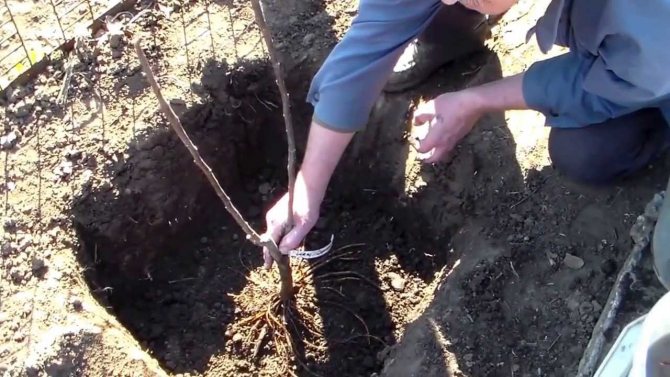

Planting figs
Shoots are arranged like sleeves pointing in different directions. Buds are formed on them, from which branches grow. On them the harvest of figs ripens.
What is needed for landing
For planting, a hole is dug about one and a half meters long, about a meter wide and up to 80 cm deep. Great depth is not needed, because the roots of this plant branch out horizontally.
The top layer of soil must be folded separately, then it is poured into the hole. At its bottom, one and a half buckets of humus are placed (it can be replaced with compost), 200 gr. superphosphate and the same amount of potash fertilizer. Then a small layer of fertile soil is poured.
A mound is formed in the hole, on which the roots of the seedling are distributed. They are covered with earth, compacted and watered abundantly.
The plant is planted in open soil around the beginning of May, when the threat of night frosts finally passes.
Optimal location
First, you need to choose the warmest place in the garden and protected from cold winds. A trench is pulled out if you need to plant several plants at once.

